Physical Address
304 North Cardinal St.
Dorchester Center, MA 02124
Physical Address
304 North Cardinal St.
Dorchester Center, MA 02124
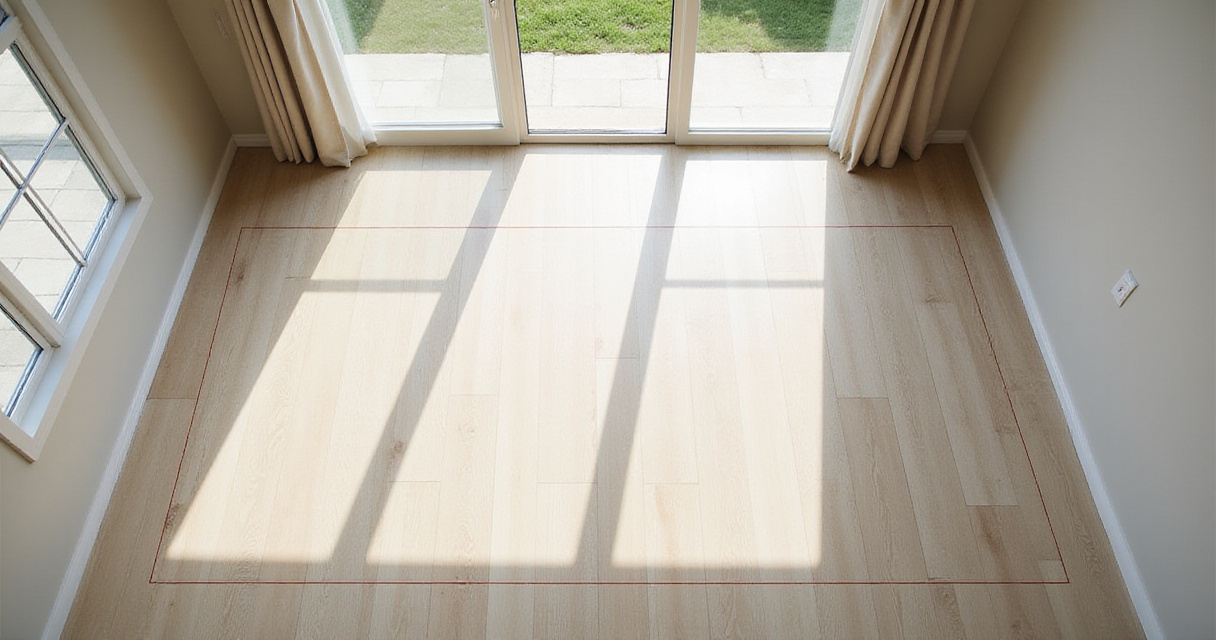
Master your dining room layout with these 22 expert tips covering everything from table placement and clearance space to lighting, storage, and flow between rooms.
The dining room is where life’s most meaningful moments unfold—family gatherings, celebratory feasts, and intimate conversations over shared meals. Yet many homeowners struggle with creating a dining room layout that balances function, flow, and atmosphere.
As someone who designs spaces where plants and people thrive together, I’ve found that dining rooms follow similar principles to indoor gardens: they need proper circulation, thoughtful zoning, and a balance of practical and aesthetic elements. Whether you’re working with a dedicated dining room or a multipurpose space, these 22 essential tips will help you create a dining room layout that nurtures both body and soul.
Before purchasing a single piece of furniture, take time to understand the canvas you’re working with. Your dining room’s dimensions and geometry fundamentally dictate what’s possible in terms of furniture placement and traffic flow. A rectangular room naturally accommodates a rectangular or oval table along its length, while square rooms pair beautifully with round or square tables that foster intimacy.
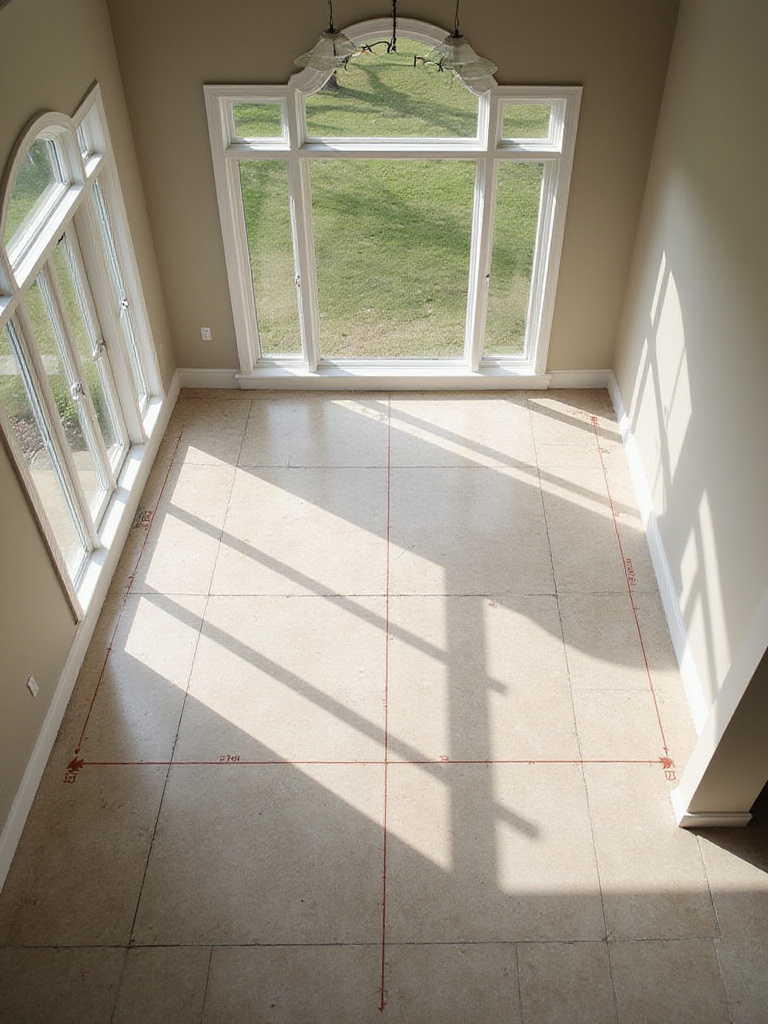
L-shaped or irregular rooms require more creative approaches. In L-shaped spaces, position the dining area in one section while using the other for a buffet or serving area. For unusual geometries, focus on creating a well-defined dining zone with clear pathways around it, using the room’s natural shape to guide furniture placement.
The inspiration for this collection of tips struck when I realized how many clients were struggling with dining rooms that felt awkward or cramped, simply because they hadn’t started with proper measurements.
Your table is the heart of your dining room layout, and its shape dramatically influences both functionality and atmosphere. Rectangular tables maximize seating in longer rooms but can create pinch points at corners. Round tables eliminate sharp corners completely, promoting conversation and improving flow in smaller or square spaces. Square tables create intimate dining experiences but can be limiting for larger groups, while oval tables offer a beautiful compromise—the length of a rectangular table with the softer edges of a round one.
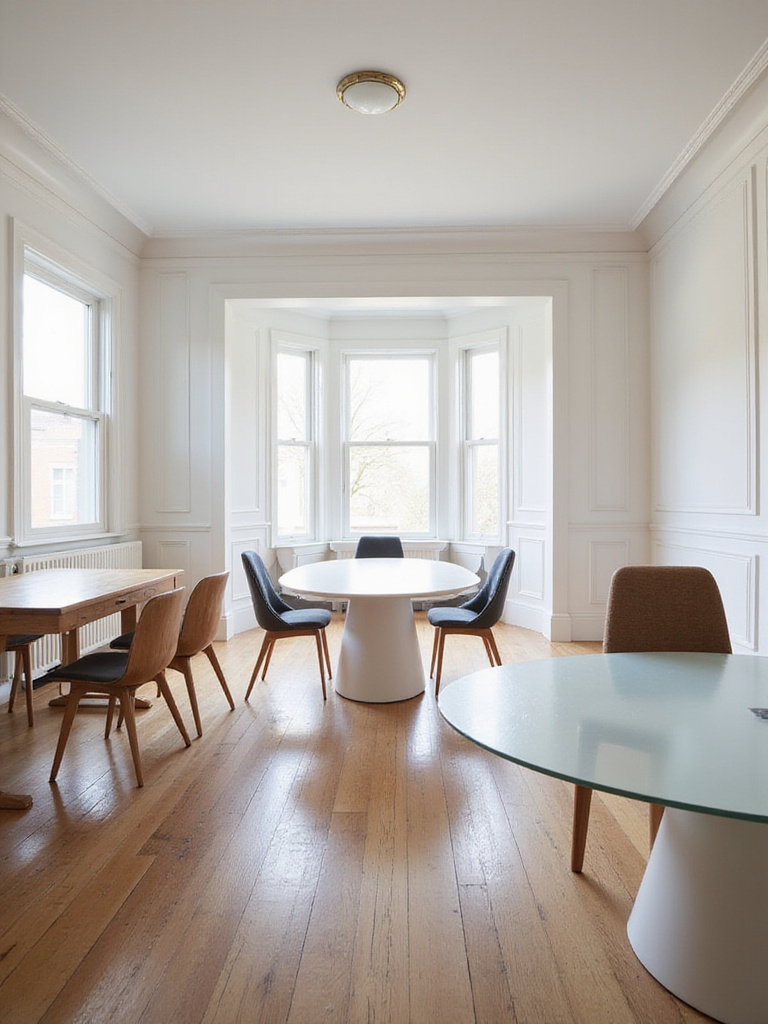
The shape you select should complement your room’s proportions while supporting your typical dining patterns. For daily family meals with occasional entertaining, consider an extendable rectangular or oval table that can grow when needed. For spaces that double as work areas or game tables, a round pedestal table might offer the most flexibility.
What makes this design special is the way it responds to your specific space—there’s no one-size-fits-all solution when it comes to dining table shapes.
The most beautiful dining room layout quickly becomes frustrating if people can’t comfortably move around it. At minimum, allow 24 inches behind each chair when pulled out for someone sitting. For areas where people need to walk behind seated diners, increase this to 36 inches. This clearance isn’t just about comfort—it’s about safety and functionality during meals.
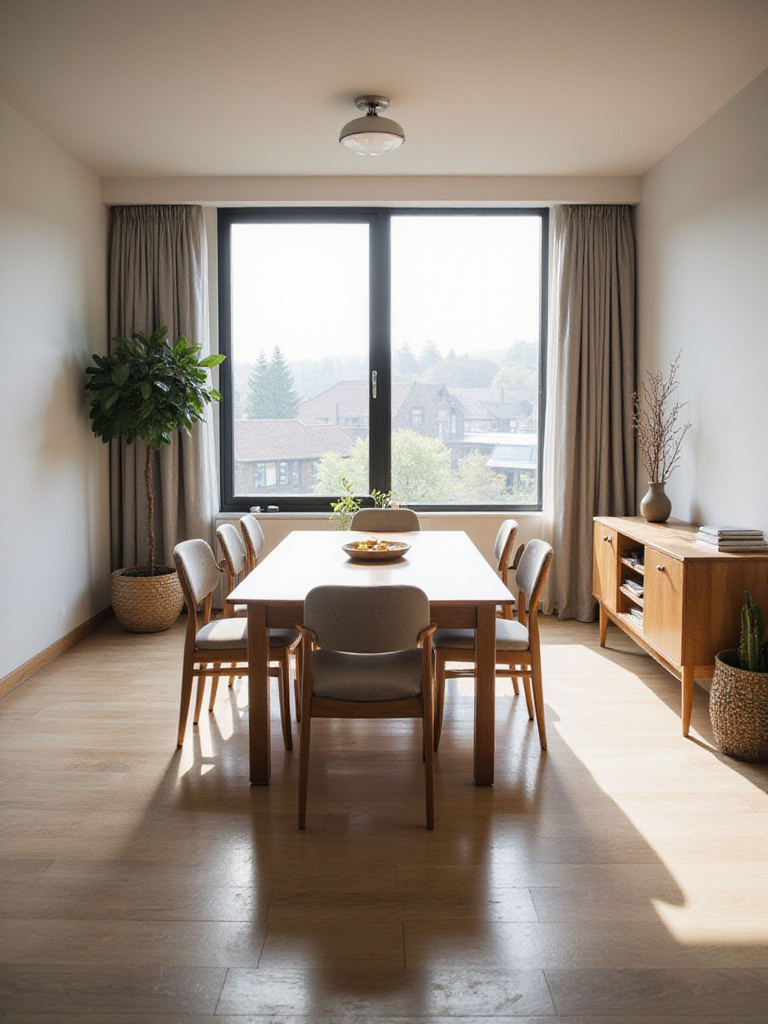
Consider chair dimensions carefully when planning clearances. Armchairs require more space than side chairs, and upholstered chairs typically have a larger footprint than wooden ones. If space is tight, consider benches along one side of the table, which can be tucked completely underneath when not in use.
The challenge of awkward spaces becomes easier when you map out these clearance zones before committing to furniture placement—use painter’s tape on the floor to visualize traffic patterns and ensure chairs can be comfortably pulled out.
In most dining room layouts, the table should serve as the undisputed focal point. This central placement immediately communicates the room’s function and creates natural gathering energy. It also ensures that people can access the table from all sides, making serving and clearing more efficient.

For rectangular rooms, this typically means centering the table along the room’s length. In open-plan spaces, “central” refers to the middle of the designated dining zone, which might be defined by a rug or pendant lighting. Avoid pushing tables against walls unless absolutely necessary for space constraints—this immediately makes the dining experience feel secondary.
The craftsmanship in this collection of layout tips tells a story of how proper positioning creates not just physical balance but also the right psychological atmosphere for gathering and connecting.
Beyond the immediate area around your table, think about how people move through the entire dining space. Identify the main entry points—typically doorways from the kitchen, living area, or hallway—and ensure clear, unobstructed paths between these points. These primary circulation routes should ideally be at least 36 inches wide, with 42-48 inches being even better for high-traffic areas.
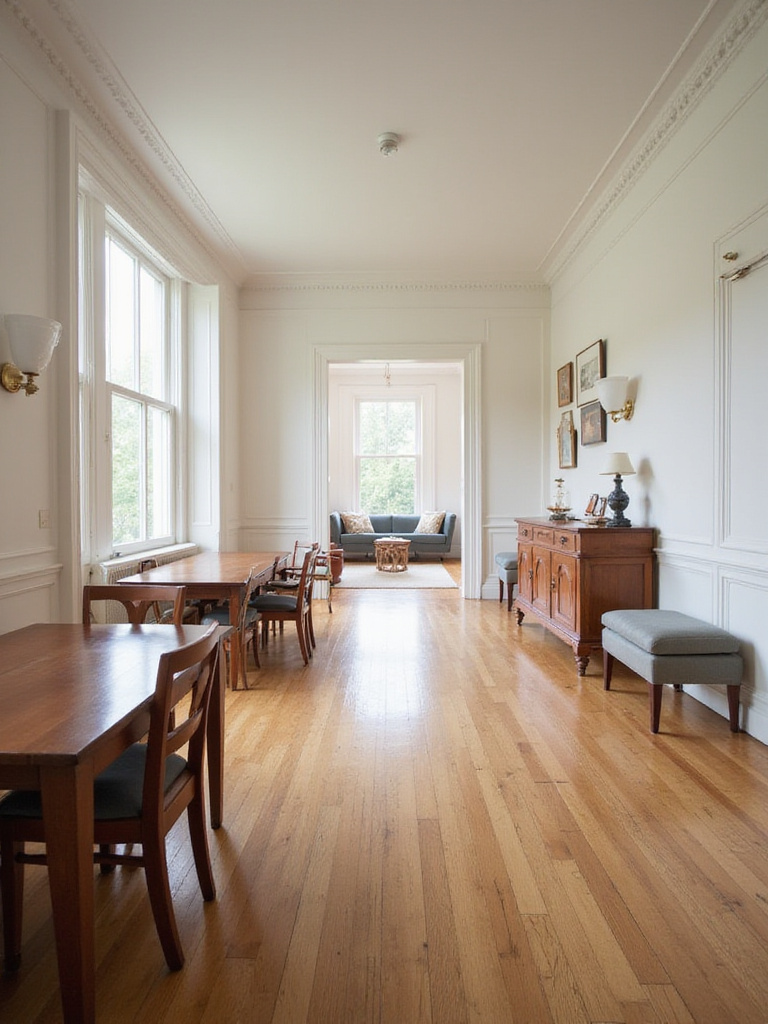
The worst dining room layouts force people to squeeze between furniture or walk through the main seating area to reach another room. Instead, position your table and supporting furniture to create intuitive pathways that skirt the dining area rather than cutting through it. This is especially important during meals when people are carrying dishes or drinks.
When clients ask us about balancing style with comfort, we often start by mapping these movement patterns—they’re the skeleton upon which all other design decisions hang.
A well-positioned sideboard or buffet transforms your dining room layout from basic to brilliantly functional. These pieces provide essential storage for tableware and linens while offering serving space during meals. The ideal location is typically along the longest uninterrupted wall, positioned where it won’t impede traffic flow but remains conveniently close to the table.
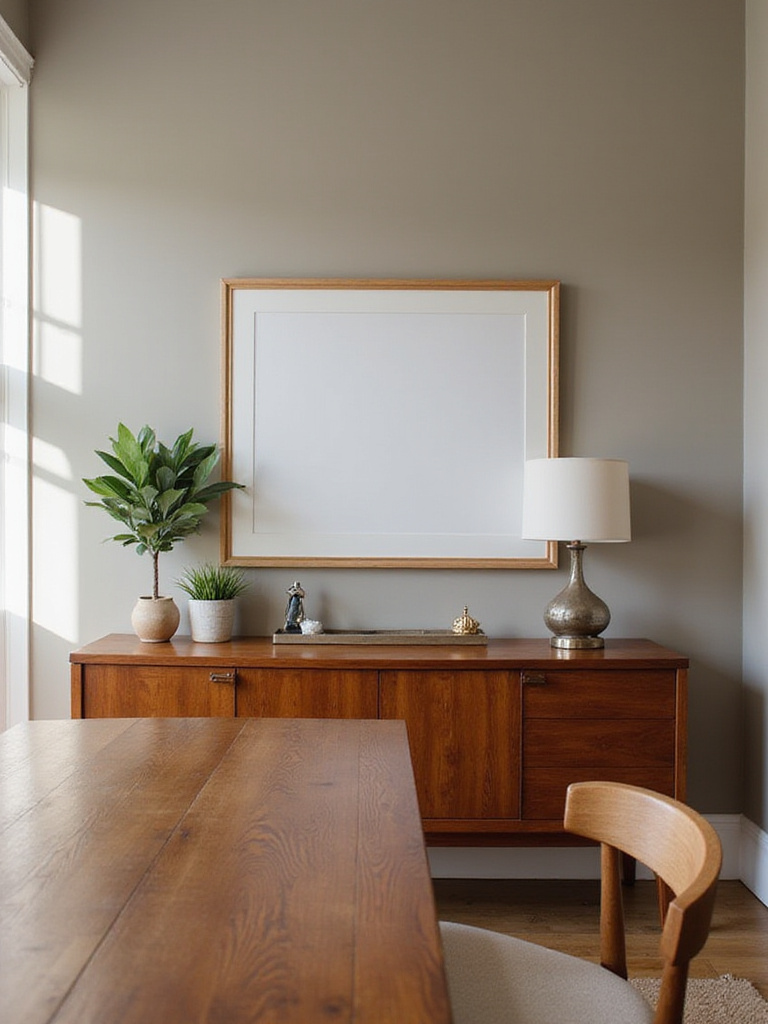
When selecting a sideboard, consider scale carefully—it should be proportional to your table and room size, typically slightly lower than dining table height. Ensure at least 36 inches of clearance between the sideboard and the nearest chair when pulled out. For narrow dining rooms, consider a slimmer console table that provides surface area without protruding too far into the space.
The unexpected environmental benefit comes from having proper storage—when everything has a designated place, you’re less likely to accumulate unnecessary items, creating a more sustainable and clutter-free dining environment.
Windows and doors significantly influence your dining room layout options. Windows provide natural light and views that can enhance the dining experience, making table placement near (but not blocking) windows often desirable. However, be mindful of glare at certain times of day, which might require window treatments for comfort.
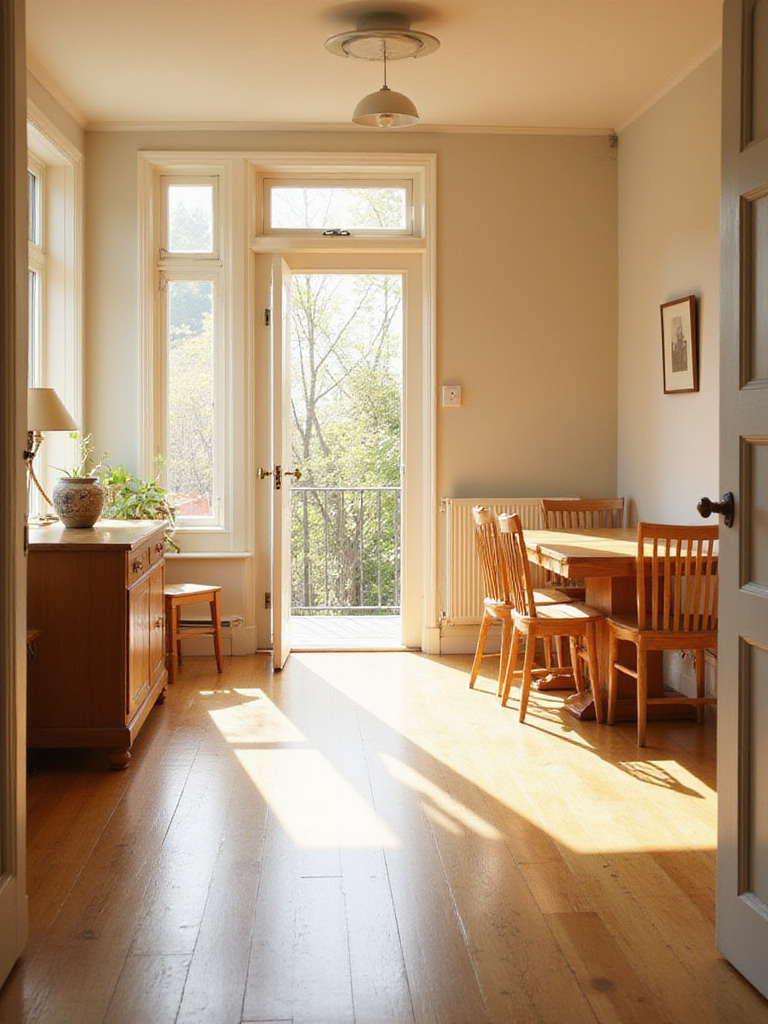
Door placements dictate traffic patterns and available wall space. Never position furniture where it blocks or impedes the full swing of a door. If your dining room has multiple doorways, you may need to shift your table off-center to maintain clear access paths. In rooms where doors or windows dominate most walls, floating your dining set in the center becomes even more important.
The designer’s secret here is to embrace these architectural elements rather than fighting them—position your table to capitalize on the best views and natural light while ensuring doorways remain unobstructed.
The right lighting transforms your dining room layout from merely functional to truly magical. A pendant light or chandelier centered over the table serves as both a practical light source and a visual anchor for the space. The bottom of the fixture should hang approximately 30-36 inches above the tabletop—high enough to avoid blocking sightlines but low enough to properly illuminate the surface.
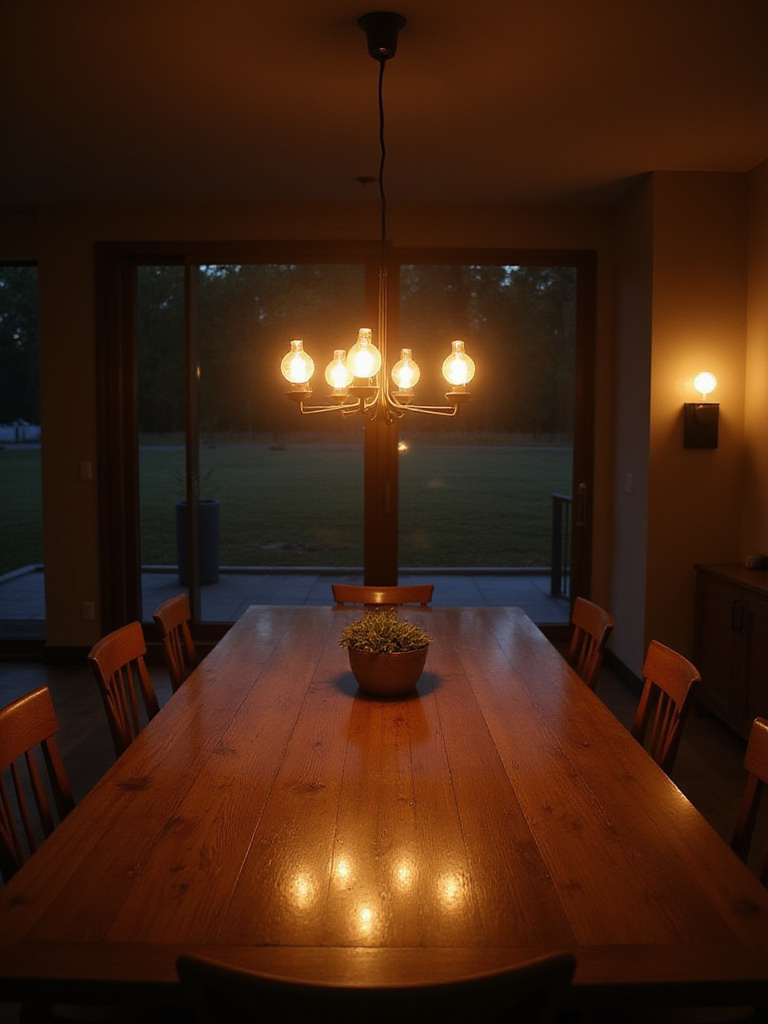
Consider the scale of your lighting fixture in relation to your table:
The ambiance evolves throughout the day as natural light shifts, so incorporate dimmable fixtures that can adjust from bright functional lighting for everyday meals to softer, warmer light for evening gatherings.
In open-concept spaces or large dining rooms, an area rug becomes an essential tool for defining your dining zone. The right rug creates visual boundaries, absorbs sound, adds warmth underfoot, and can introduce color and texture that ties your dining room layout together.
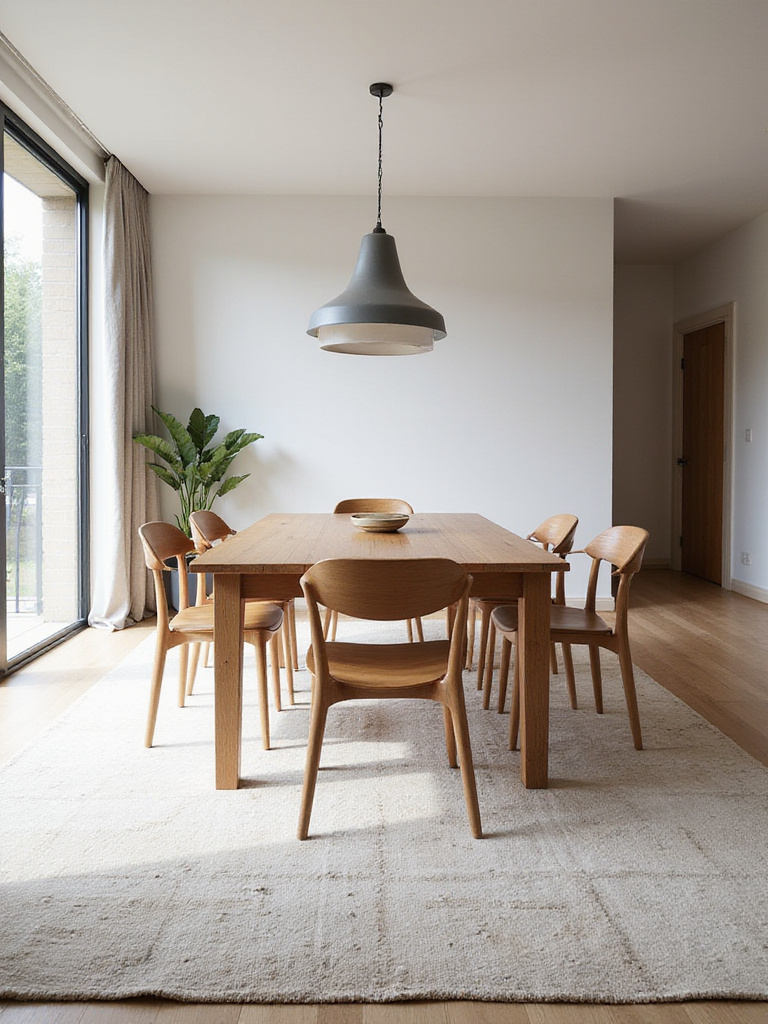
When selecting a dining room rug, size matters tremendously:
Beyond size, prioritize durability and cleanability—wool blends, indoor/outdoor materials, and low-pile constructions stand up best to the inevitable spills and chair movement.
The tactile experience changes the entire room’s energy when you introduce the right rug—it’s like adding a foundation layer to your dining room layout that makes everything else feel more intentional.
Your dining room layout should reflect how you actually live and entertain, not an idealized version of formal dining. Consider your household size for daily meals, how often you host gatherings, and the typical size of these events. Most households benefit from flexibility—perhaps seating for 4-6 for everyday use with the ability to expand for special occasions.

Standard space requirements per person at a dining table:
For maximum flexibility, consider an expandable table with leaves, which allows you to adapt to different group sizes. Complementary seating like a nearby bench or a few folding chairs stored in a closet can accommodate the occasional larger gathering without permanently taking up space.
The interplay between the colors and materials of your table and chairs creates a cohesive dining room layout that feels intentionally designed rather than randomly assembled.
Safety and functionality in your dining room layout demand that entryways and exits remain unobstructed. Beyond the obvious safety concerns, blocked doorways create psychological tension and make the space feel unwelcoming. Maintain at least 36 inches of clear passage around all doorways—more if the doorway connects to a high-traffic area like the kitchen.

This principle extends beyond just the door itself to the natural pathway leading to and from it. Visualize people moving between rooms carrying plates or drinks, and ensure furniture placement supports this flow rather than creating obstacles. If your dining room serves as a passageway to another room, position the table to create a clear traffic lane along one side.
The magic of this piece of advice lies in its simplicity—when movement feels natural and unimpeded, the entire dining experience becomes more relaxed and enjoyable.
One of the most common dining room layout mistakes is failing to measure both the room and the furniture accurately before purchasing. Precise measurements prevent costly errors like buying a table that’s too large for the space or chairs that don’t fit comfortably around it. Always measure:
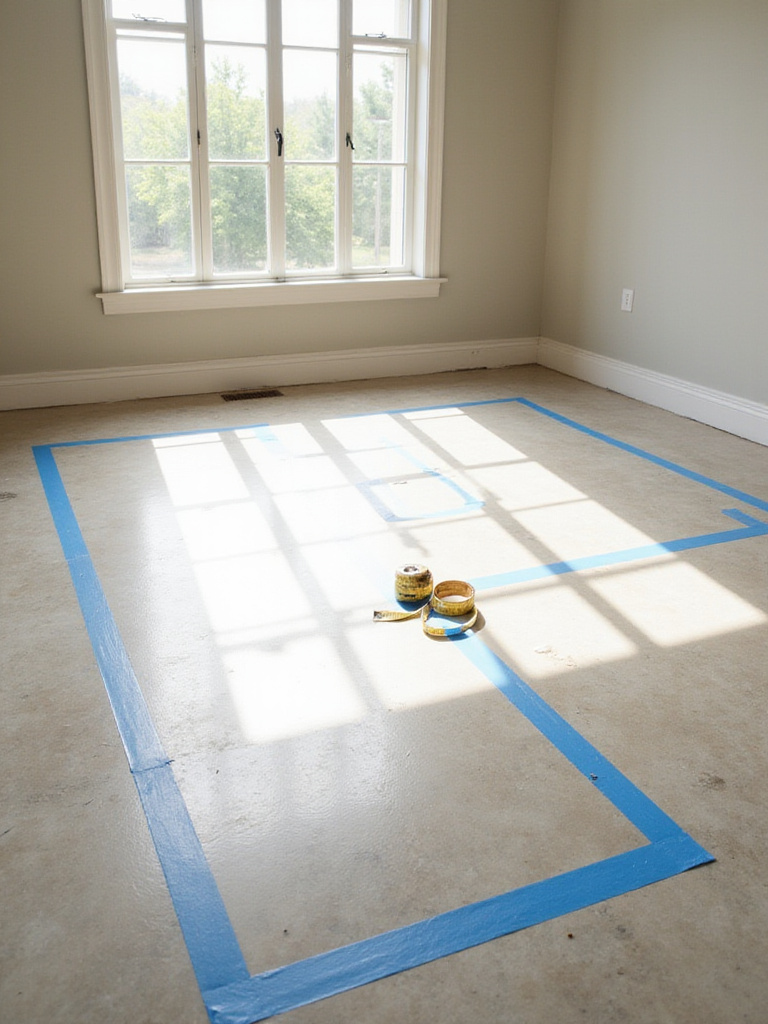
For expandable tables, measure both the closed and fully extended dimensions to ensure your dining room layout can accommodate both configurations. Remember that chairs need to be pulled out approximately 18-24 inches from the table edge for someone to sit comfortably.
The sustainable journey of this material involves careful planning that reduces waste—both financial and environmental—by ensuring you purchase appropriately sized pieces the first time.
A functional dining room layout incorporates storage for the items you use when dining and entertaining. Without proper storage, these items either create clutter or must be stored far from where they’re used, making meals less convenient. Consider what needs to be stored in your dining area:
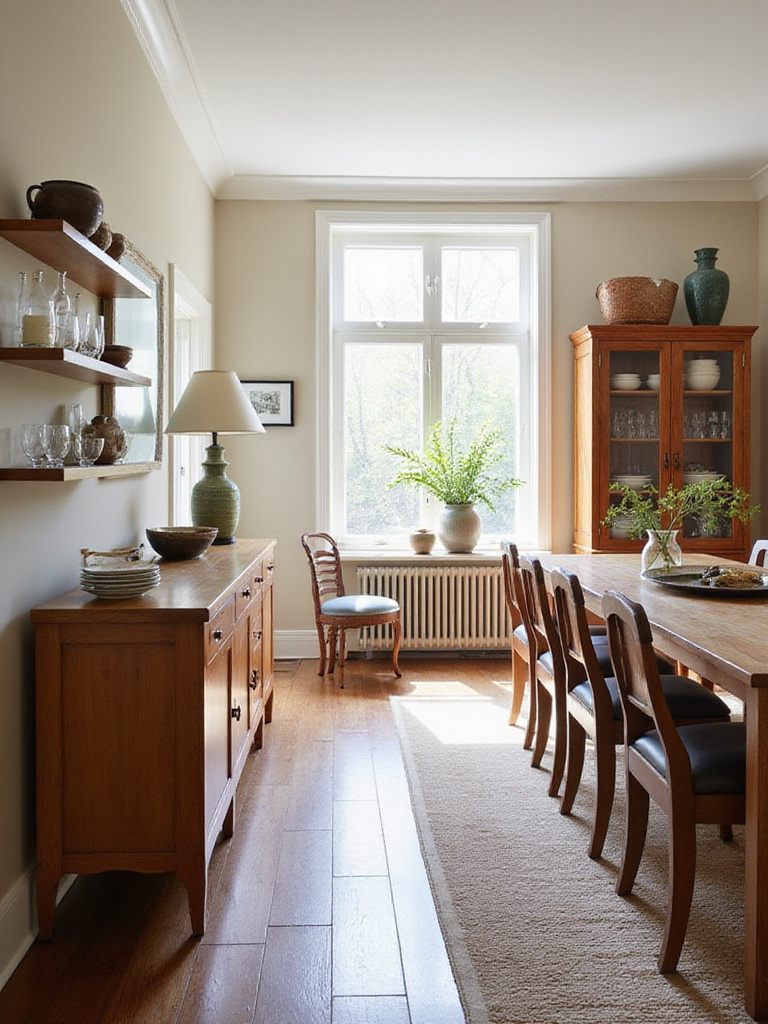
Traditional storage pieces like sideboards, china cabinets, or hutches work beautifully in dedicated dining rooms. In multipurpose spaces, look for dual-function furniture like storage benches, tables with drawers, or wall-mounted cabinets that don’t consume floor space. Position storage pieces for easy access during meals without disrupting the main circulation paths.
For those worried about maintenance, choose storage solutions with a mix of closed cabinets for items that might collect dust and open shelving for frequently used pieces or decorative displays.
Modern homes often feature dining areas within larger multipurpose spaces rather than dedicated dining rooms. In these open layouts, creating a distinct dining zone is essential for a cohesive dining room layout. Without clear definition, the dining area can feel like an afterthought rather than an intentional space for gathering.
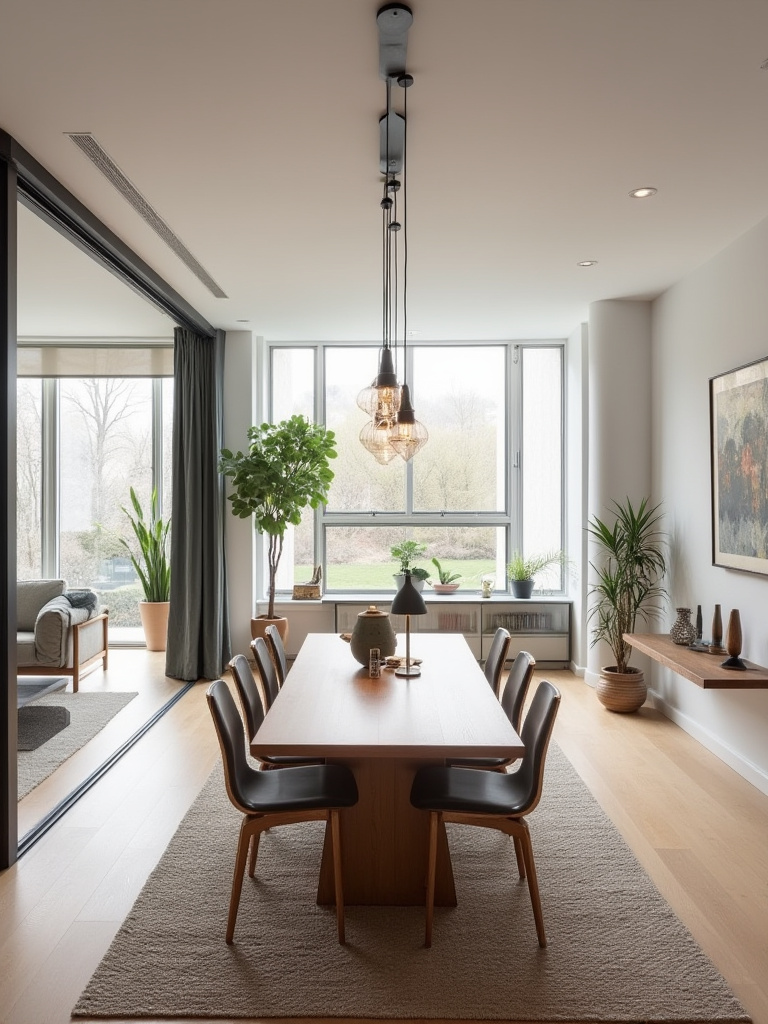
Effective techniques for defining dining zones include:
The versatility reveals itself when you pair these zoning techniques with furniture that complements adjacent areas, creating visual connection while maintaining functional separation.
A dining room layout that works beautifully when everyone is seated might still fail during the dynamic processes of serving and clearing. Beyond just accommodating chairs, ensure there’s sufficient space for the practical aspects of dining. Ideally, maintain at least 36-48 inches between the table edge and walls or other furniture where serving will occur.
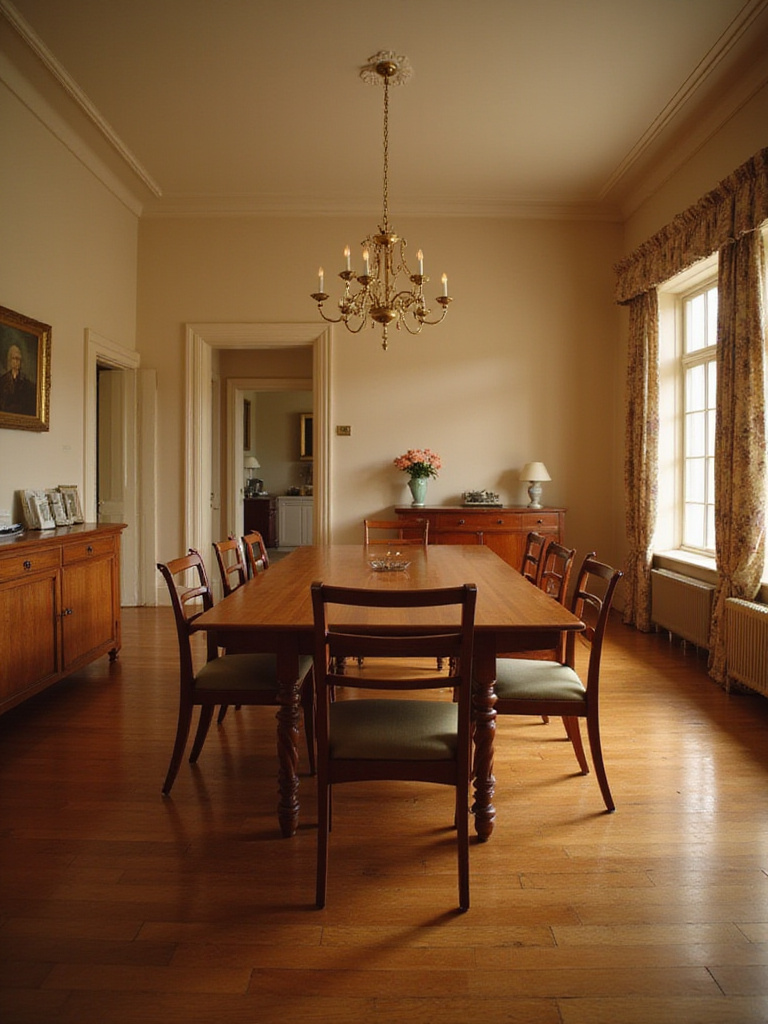
Consider how food reaches the table in your household:
These practical considerations often reveal the need for slightly more space than you might initially allocate, especially in dining rooms that connect directly to kitchens.
The environmental story behind this piece of advice began with observations of how people naturally move and interact during meals—the most successful dining room layouts anticipate these movements rather than impeding them.
When floor space is limited, look upward to expand your dining room layout possibilities. Walls offer valuable real estate for both functional storage and aesthetic enhancement without consuming precious floor area. Thoughtful vertical elements can also draw the eye upward, making the room feel larger and more spacious.
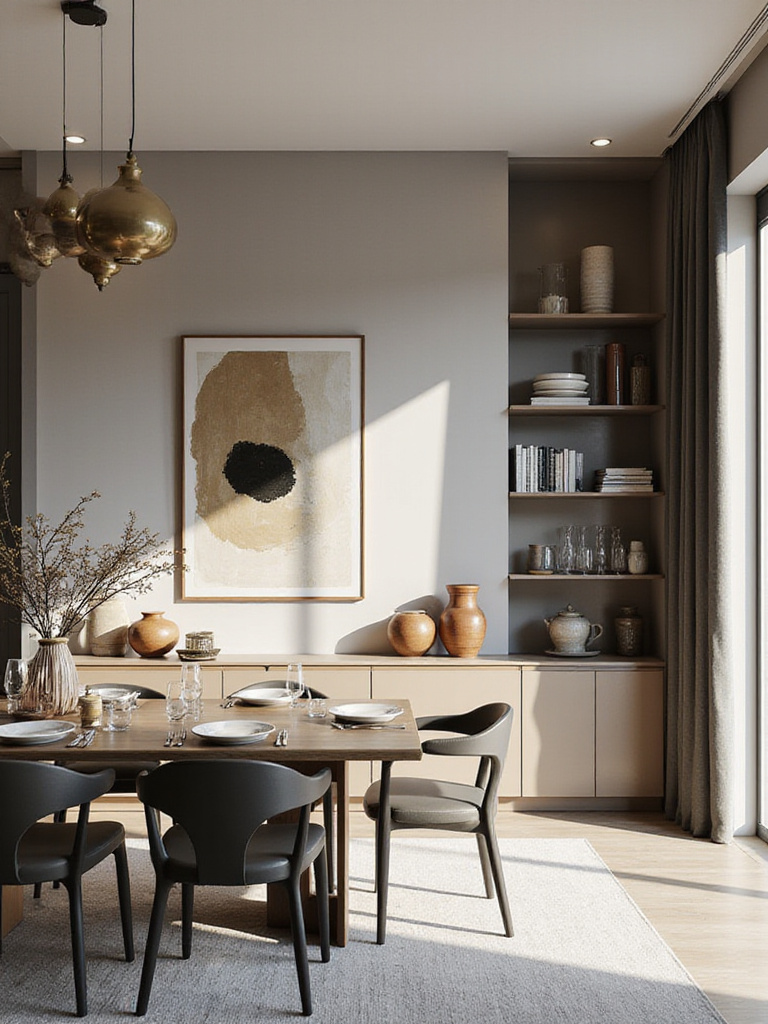
Effective ways to utilize dining room walls include:
Running your hand across this material reveals how vertical elements create rhythm and dimension in your dining room layout, adding layers of interest that make the space feel complete rather than flat.
A truly refined dining room layout considers the experience of every person at the table, not just the overall appearance of the room. The view from each seat significantly impacts comfort and enjoyment during meals. Take time to literally sit in each position around your table and notice what you see—is it a blank wall, a beautiful window, or perhaps the kitchen mess?
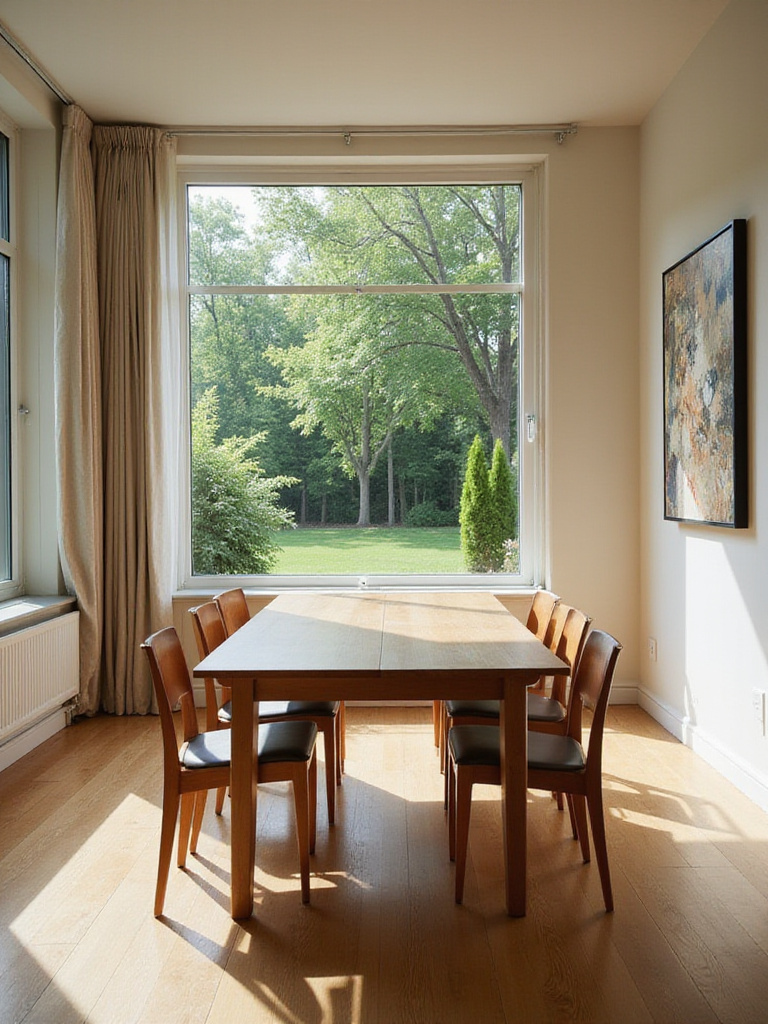
Improve the experience from all seats by:
“A thoughtful dining room layout considers not just how the room looks empty, but how it feels when filled with people engaged in the simple pleasure of sharing food.”
If you’ve struggled with similar rooms before, this perspective shift—literally seeing the space from each seat—can transform how you approach your dining room layout.
A common mistake in dining room layout is trying to fit too much into the available space. While it might be tempting to maximize seating capacity or include numerous storage pieces, overcrowding diminishes both comfort and functionality. A dining room should feel generous and welcoming, not cramped and cluttered.
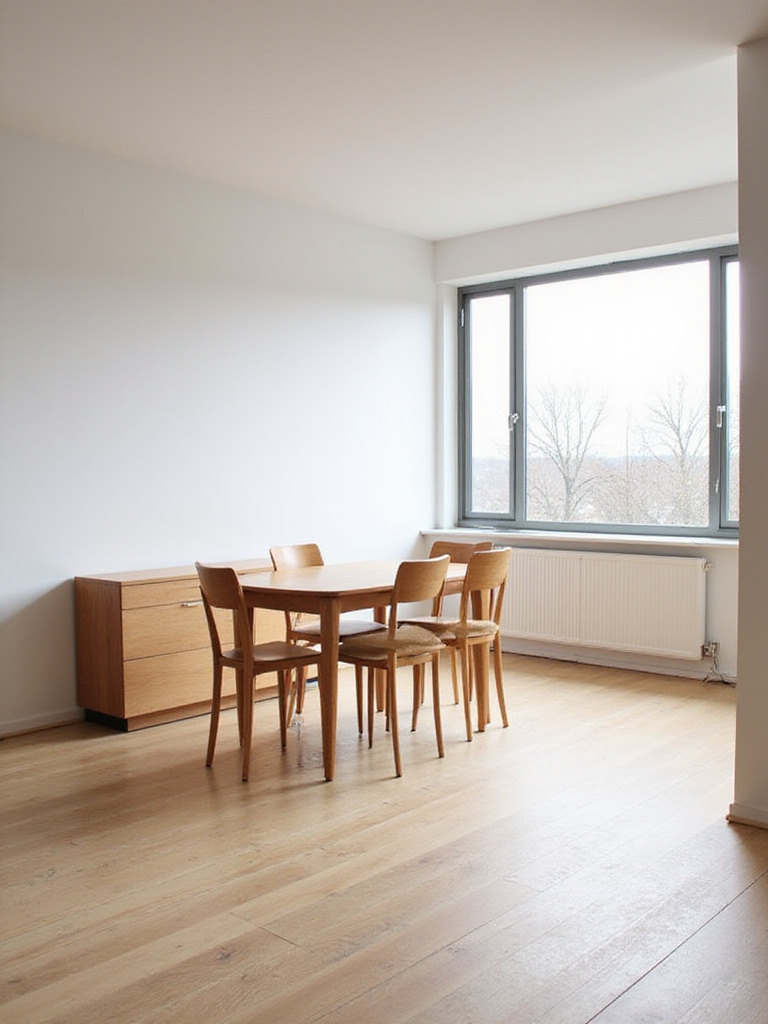
Signs your dining room may be overcrowded include:
Remember that negative space—the empty area between furniture—is as important as the furniture itself in creating a balanced dining room layout. This breathing room allows for comfortable movement and creates visual calm.
The unexpected benefit comes from embracing restraint—fewer, better pieces often create a more luxurious and functional dining experience than cramming in maximum furniture.
Flexibility in your dining room layout can be achieved through expandable tables that adapt to different gathering sizes. These clever pieces allow you to maintain an appropriately scaled table for daily use while providing additional capacity when entertaining. When incorporating an expandable table, consider both its smallest and largest configurations in your planning.
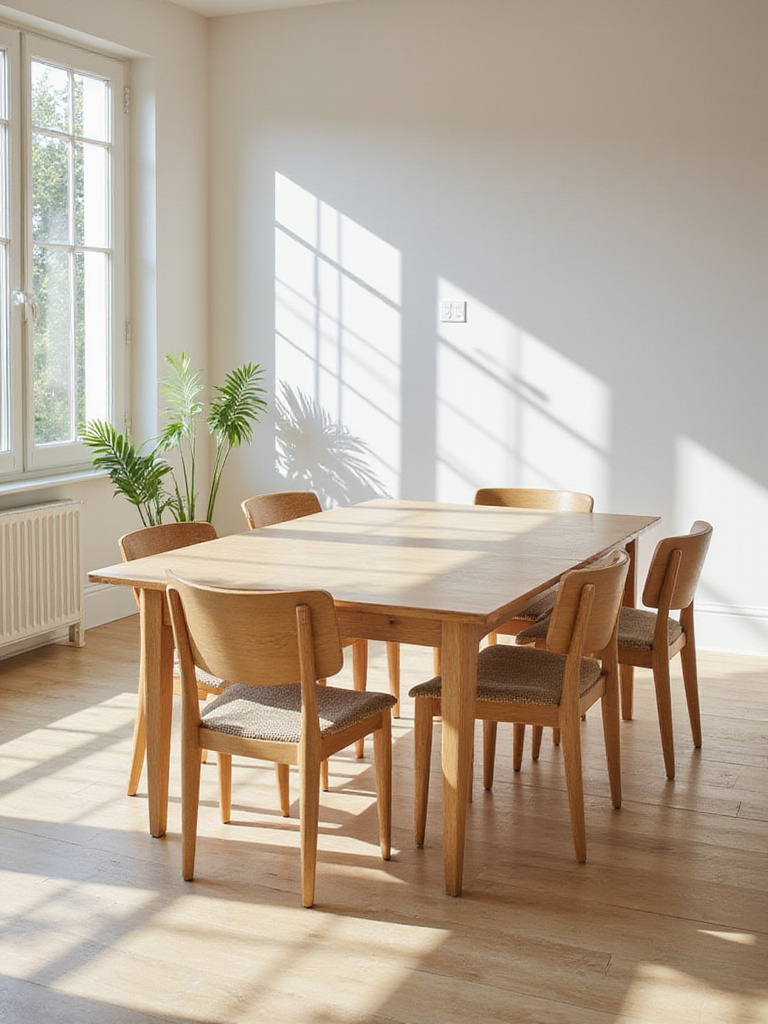
Popular expandable table options include:
The dining room layout must accommodate the table at its largest size, with appropriate clearances maintained even when fully extended. This often means selecting other furniture pieces carefully to ensure they don’t impede the expanded table footprint.
Beyond aesthetics, the ecological impact matters because flexible furniture that serves multiple purposes reduces the need for additional pieces, creating a more sustainable approach to dining room design.
Few dining rooms exist in isolation—they typically connect to kitchens, living areas, or both. Your dining room layout should facilitate smooth movement between these spaces, particularly the critical path between kitchen and table. This connection is especially important during meal service when hot dishes, drinks, and multiple trips are likely.
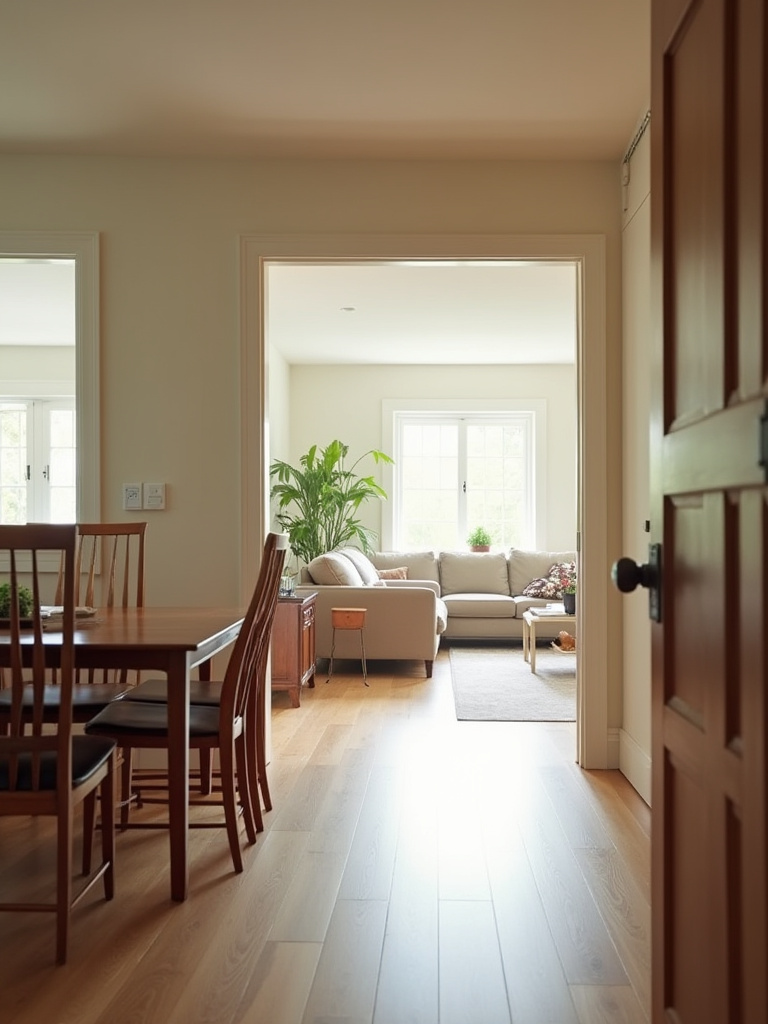
For optimal kitchen-dining connections:
In open-plan homes where dining areas adjoin living spaces, create a layout that allows conversation between zones while maintaining distinct functions. Avoid positioning dining chairs where they might bump into seating in the living area when pulled out.
While trendy, this element has staying power because it recognizes the fundamentally social nature of dining and how it connects to other household activities.
Mirrors are powerful tools in dining room layout, creating illusions of additional space and amplifying available light. A strategically placed mirror can make a small dining room feel significantly larger or brighten a naturally dark space. Beyond these practical benefits, mirrors add sparkle and visual interest that enhances the dining experience.
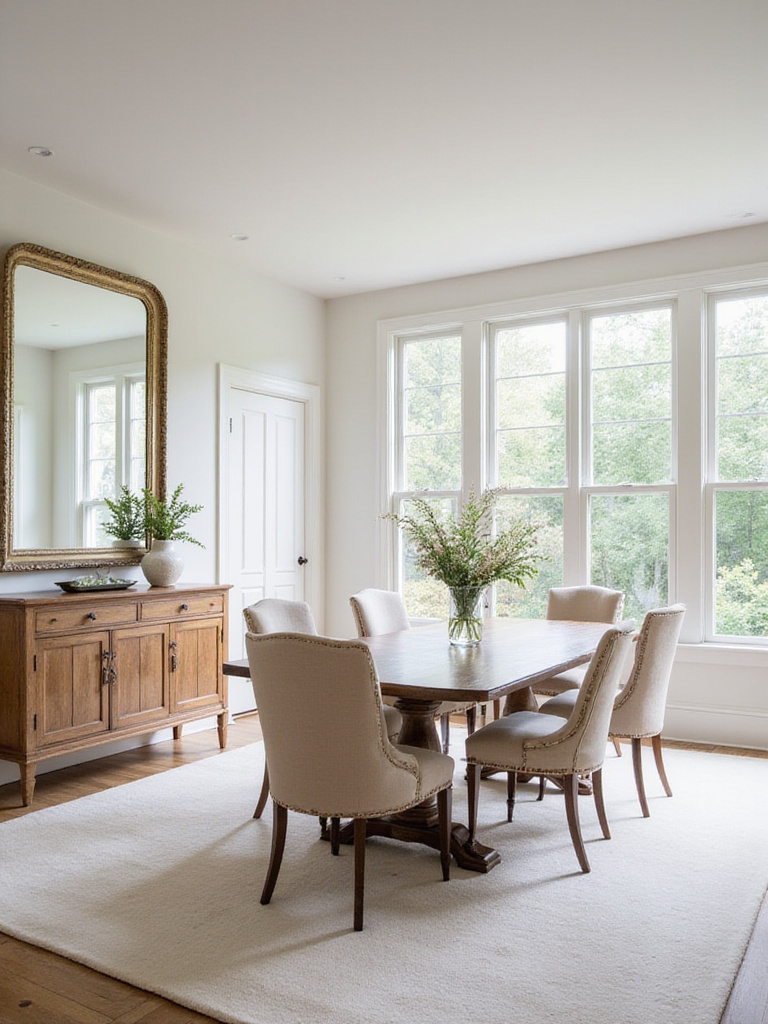
Effective mirror placement strategies include:
The interplay between the colors and textures in your dining room creates dynamic reflections in mirrors, adding another dimension to your design scheme.
The final and perhaps most practical tip for perfecting your dining room layout is to plan thoroughly before moving a single piece of furniture. Creating a detailed sketch or floor plan saves time, prevents damage to floors and walls, and helps you visualize how different arrangements will function.
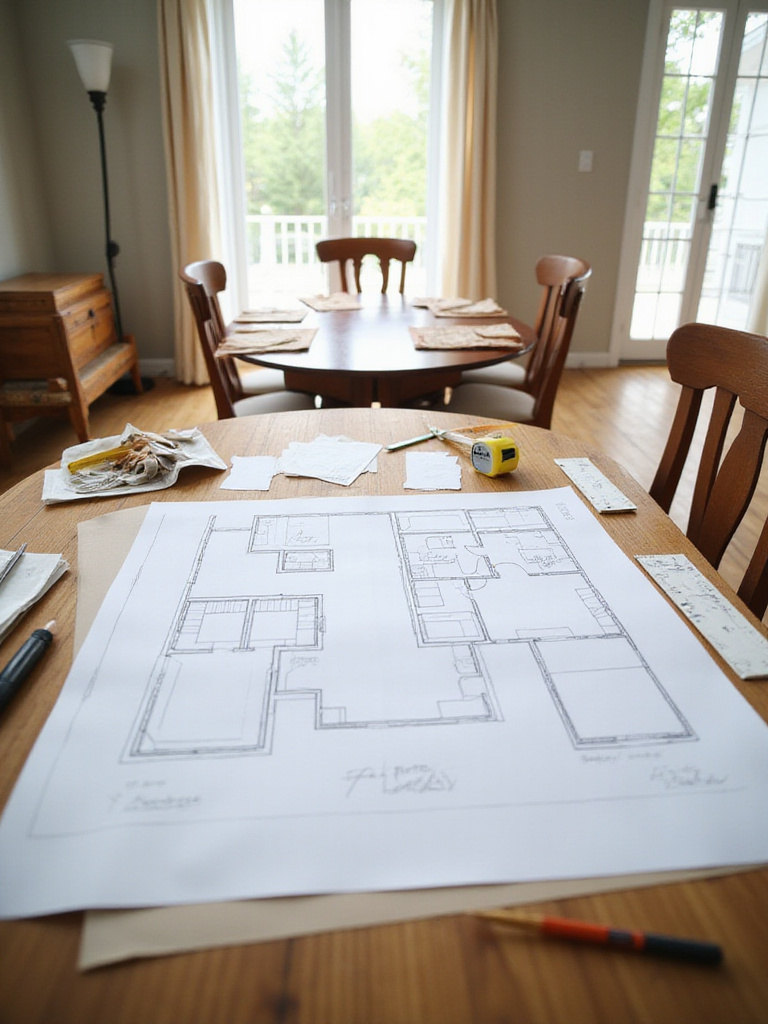
Effective planning methods include:
Include all architectural features (doors, windows, built-ins), furniture dimensions, and clearance spaces in your plan. Create multiple versions to compare different arrangements side by side.
The craftsmanship reveals itself in details like proper measurements and careful planning—investing time at this stage prevents costly mistakes and ensures your dining room layout will function beautifully for years to come.
Creating an effective dining room layout is both an art and a science—blending practical considerations of space and flow with the aesthetic elements that make a room feel inviting. Whether you’re working with a dedicated dining room or carving out a dining zone within a larger space, these 22 tips provide a comprehensive framework for success.
Remember that the best dining room layout is one that supports how you actually live and entertain. It should facilitate both the practical aspects of serving meals and the meaningful connections that happen around the table. By starting with accurate measurements, ensuring adequate clearances, positioning furniture thoughtfully, and considering both function and atmosphere, you’ll create a dining space that nurtures both body and soul—a true recipe for successful entertaining and everyday enjoyment.